
 Here’s what Virus has going for it: an all-too-rare lead performance by the undervalued Jamie Lee Curtis as the Sigourney Weaver of a crew of hard-nosed sailors trapped on an extraterrestrial-infested Rusian ship; a nifty-neato geek monster with some fairly cool animatronics and gore; a lesser (but at least not the least) Baldwin brother; and Donald Sutherland in bug-eyed, ham-sandwich mode.
Here’s what Virus has going for it: an all-too-rare lead performance by the undervalued Jamie Lee Curtis as the Sigourney Weaver of a crew of hard-nosed sailors trapped on an extraterrestrial-infested Rusian ship; a nifty-neato geek monster with some fairly cool animatronics and gore; a lesser (but at least not the least) Baldwin brother; and Donald Sutherland in bug-eyed, ham-sandwich mode.
Here’s what Virus doesn’t have: genuine scares, anything approaching originality, and a director who can do more than aim the camera at the right spot. But when I’m presented with a monster comprised of electrical impulses that replicates itself by combining spare human body parts with mutated versions of the spiderbots that menaced Tom Selleck in Runaway, resulting in awesomely goofy Borg/Cenobite hybrids, I’m willing to forgive a lot.
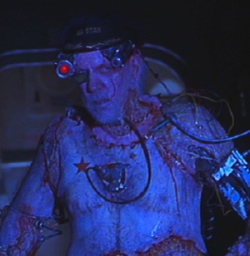 A generic Alien on a boat, there’s little to actually recommend, and nothing aside from the efforts of some talented effects technicians stands out. But for me, Virus is comfort food — an unchallenging, unchanging, unhealthy snack — one of those films that somehow fills a particular hole in my soul. A greasy Hawaiian pizza of a movie.
A generic Alien on a boat, there’s little to actually recommend, and nothing aside from the efforts of some talented effects technicians stands out. But for me, Virus is comfort food — an unchallenging, unchanging, unhealthy snack — one of those films that somehow fills a particular hole in my soul. A greasy Hawaiian pizza of a movie.
Bonus marks for allowing Sutherland to perform his last scenes as a manic, organs-exposed Terminator. Even in a career as varied and wide-ranging as his, that must be a first. BTW: I hereby claim the term “sigourney,” meaning any female lead in a genre flick comprised otherwise almost entirely by male character actors wherein all men will almost certainly be deceased by film’s end, as in, “Jamie Lee Curtis pulls sigourney duty.” —Corey Redekop

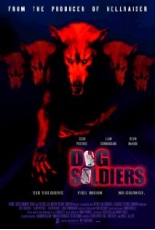
 Set in the Scottish highlands, the inexpressibly splendid
Set in the Scottish highlands, the inexpressibly splendid 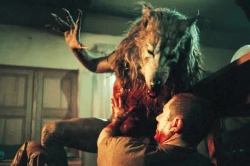 In his directorial debut, Neil Marshall (
In his directorial debut, Neil Marshall (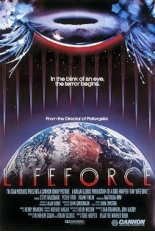
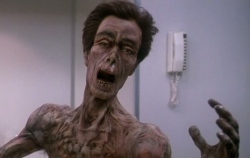 Cannon Films clearly didn’t know what it had signed on for. Lifeforce flopped, with reviews generally negative or worse (although Gene Siskel liked it). But aided through hindsight and extended editions, Lifeforce is a geek classic. Certainly no one involved phoned it in; Hooper’s direction (never better) captures the style and dry wit of the classic Hammer
Cannon Films clearly didn’t know what it had signed on for. Lifeforce flopped, with reviews generally negative or worse (although Gene Siskel liked it). But aided through hindsight and extended editions, Lifeforce is a geek classic. Certainly no one involved phoned it in; Hooper’s direction (never better) captures the style and dry wit of the classic Hammer